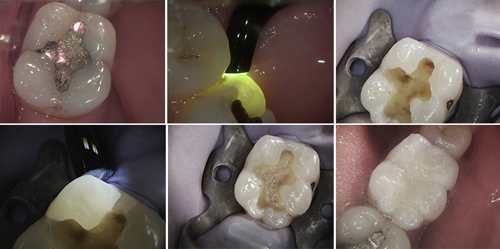What is Biomimetic Dentistry?
Biomimetic dentistry, a type of tooth-conserving dentistry, treats weak, fractured, and decayed teeth in a way that keeps them strong and seals them from bacterial invasion. In dental practices around the world, Biomimetic Dentistry has practically eliminated cutting teeth down for crowns and destructive root canal treatment. Patients are happier and often spend less compared to conventional treatment.
Biomimetic means to copy or mimic nature.
Nature is our ideal model to imitate. The basic science for dentally mimicking nature is found in the Biomechanical characteristics of teeth. Our comprehension of what nature looks like and feels like is essential. Teeth move, bend and have physical dynamics of force that must be accounted for while re-making the tooth with nature as our guide. In other words, we can study nature’s properties of teeth so that we can better duplicate them.
Many competing synthetic dental materials are stronger, stiffer and seemingly more beautiful, however, their use often leads to undesirable results–even catastrophic failures. Dentistry has had structural failures and problems related to the over-engineering of materials, mostly because we did not have the knowledge or the technology to imitate natural teeth. Now it is possible to rebuild teeth with materials that simulate natural teeth much more closely, and hold up better to constant chewing.
Biomimetic professionals have studied the dental scientific literature and have applied those techniques and materials. Both staff and patients can testify that teeth restored with Biomimetic restorations feel and look like real teeth and they can be confident that the potential of catastrophic failure including root canals and fractures has been reduced or eliminated altogether.
Modern adhesives and bonding techniques are the driving force of Biomimetic Dentistry.
With traditional dentistry we had to destroy healthy tooth structure in order to accommodate a new restoration. In other words, we had to destroy in order to create. Now we are able to bond or glue teeth back together and even add missing parts of the tooth reliably without removing volumes of precious tooth structure. It has the added value of sealing the tooth from bacterial infection. This has mostly eliminated the need for painful and destructive crowns and root canal treatment with its associated pins, posts, slots, grooves and other non-adhesive retention features.
Biomimetic dentistry is conservative.
The Academy of Biomimetic's philosophy is "less dentistry is the best dentistry", or, better said: "There is no dentistry like no dentistry." Much of the amputation of tooth structure can be eliminated with modern science and medicaments. Periodontal disease and caries (decay) can be eliminated with modern therapies, hygiene, and proper home care. Such therapies can reduce periodontal problems and tooth infections without significant resection of tissue. If decay or old fillings exist, they can be treated with the most conservative materials and techniques. We can say that preservation and conservation lie at the heart of Biomimetic Dentistry. The heart of the tooth is the pulp, which is the brain of the tooth. Preserving the pulp is vital to the patient’s lifelong dental experience. The economic implications of not needing the advanced, invasive care seen in traditional (amputational) dentistry have profound positive effects on people’s lives.
We can now help patients create a healthy and happy mouth with simple and often painless techniques!

Patient has a normal amalgam filling and not experiencing any problems. Although to a trained eye, we can see that there is a fracture which has been caused from the amalgam filling over the years. In using a Trans-illuminating light on the tooth it shows the fracture. The amalgam is then taken out where we can illuminate the fracture once again. Once the fractures are stabilised and the surfaces have been air-braded, primed and bonded, they are ready for the new filling to be placed. Using a Ribbond lining, which is a Kevlar material which takes some of the stresses off the tooth. Once completed the restored tooth looks like it was originally designed to be like.